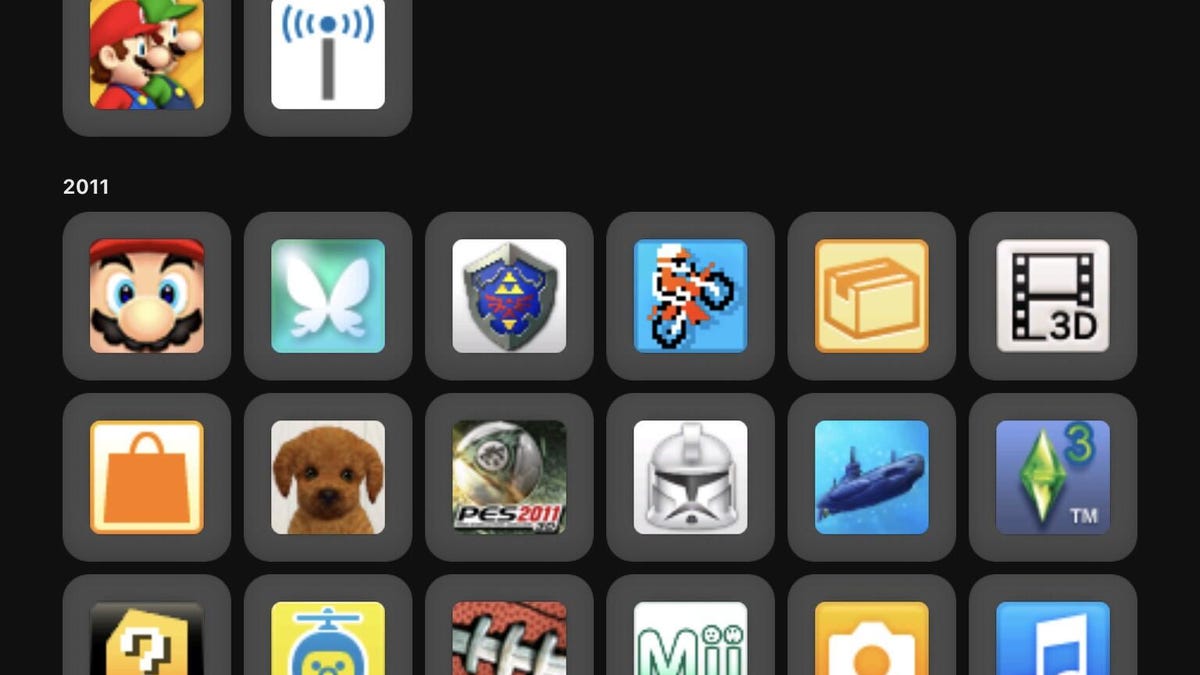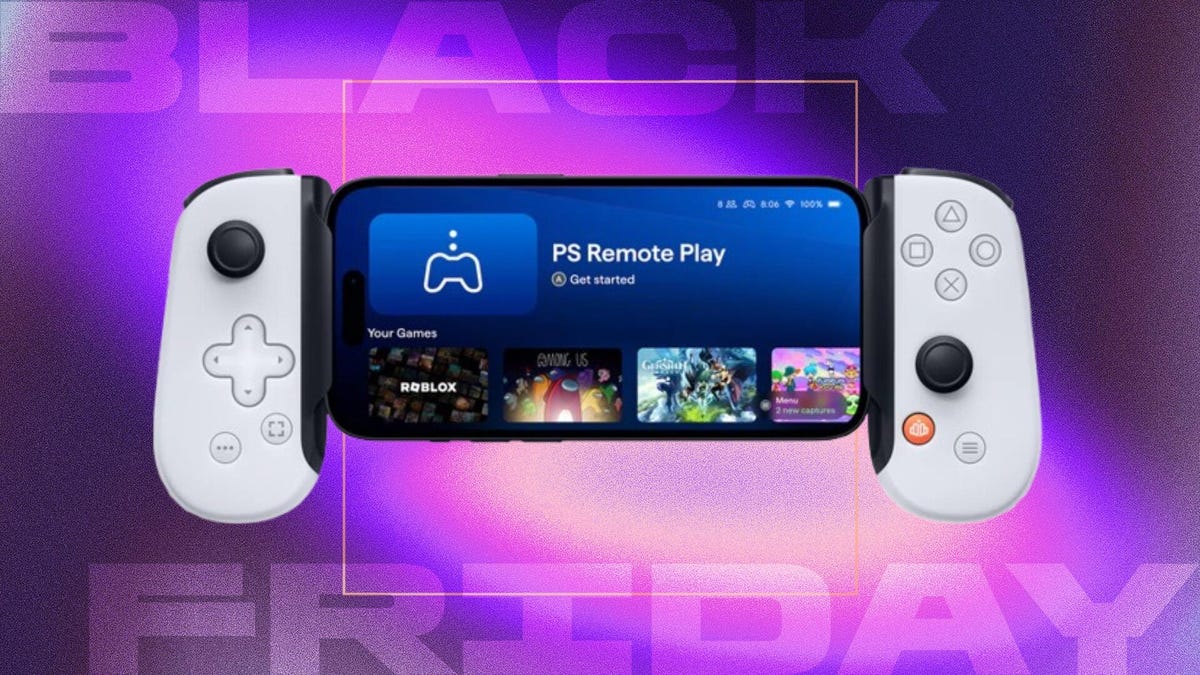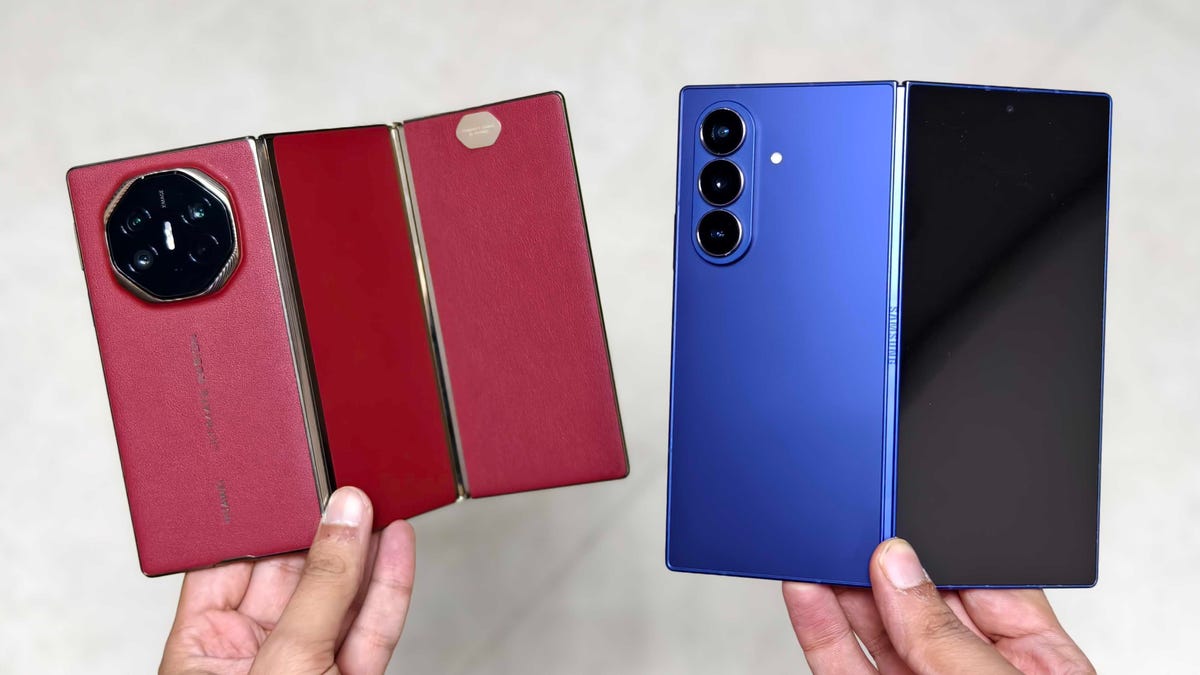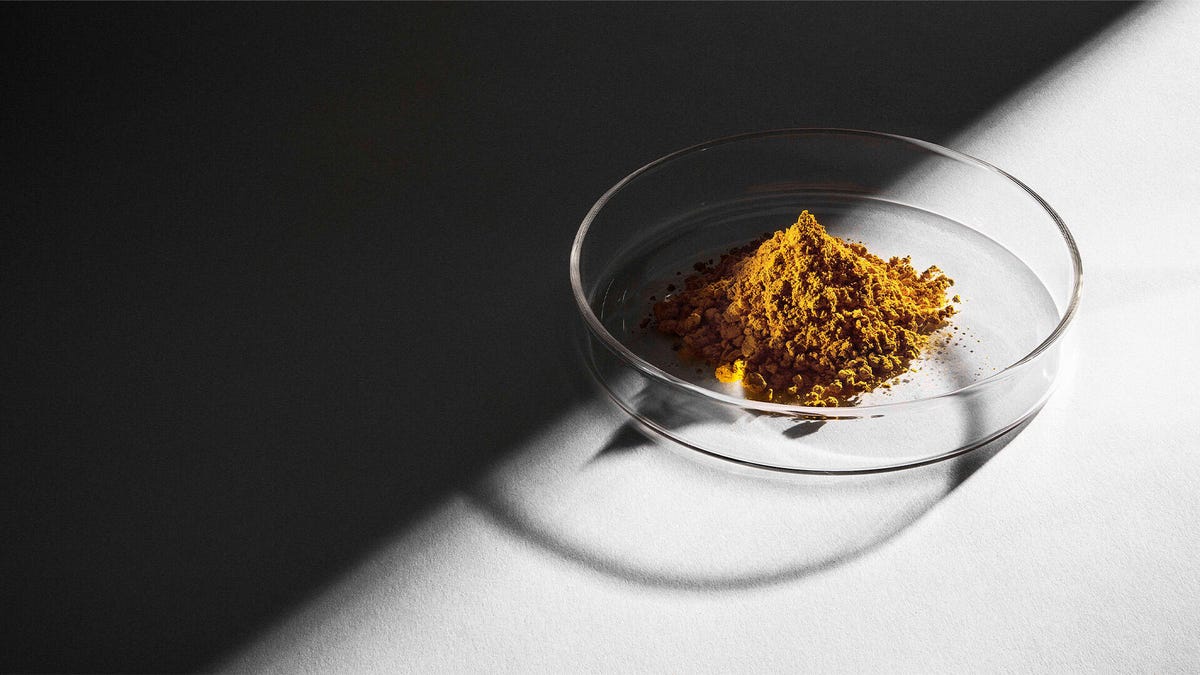Technologies
How to Relive Your Nintendo Gaming History Across Consoles and Decades
The new Nintendo Store app includes a list of the games you’ve played and how long you played them.

Nintendo’s new mobile app for its storefront for iOS and Android does a good job of making it easier to browse and purchase games for the Nintendo Switch and Switch 2, but its most compelling feature may be one that lays out your Nintendo gaming history by year.
Buried at the very bottom of your Profile page on the Nintendo Store app (you can get to it by tapping the icon with your Mii at the bottom right) is an option called Play Activity. At the top, your Recent Activity will display games you played recently and for how long. But scroll down through All Activity and you’ll find games and console apps stretching back years and years.
Don’t miss any of our unbiased tech content and lab-based reviews. Add CNET as a preferred Google source.
For me, it was a shock to see Wii U and Nintendo 3DS titles I’d forgotten all about, such as a game my daughters enjoyed — Art Academy: Home Studio — and Chibi-Robo! Zip Lash, which I played in 2015 for 10 days. I have no recollection of playing Steel Diver for Nintendo 3DS, but there’s evidence to prove that happened on March 28, 2011.
Why Play Activity matters
If the feature were just nostalgia for nostalgia’s sake, that would be one thing, but for anyone who has a long history across multiple Nintendo console generations, this is good information to have. In an era of remakes and re-releases, it’s helpful to know what games you actually have played before, what console you played them on and whether you spent much time on them. My Play Activity history is littered with games I only played for less than an hour, such as Ridge Racer 3D, and abandoned for others.
It reminds me that I played Nintendogs, the cute dog simulator, for a full four years, from 2011 to 2015. Why hasn’t Nintendo rebooted that franchise?
It’s useful that you can sort the play history by most recently played, date first played, total time played and by game system. I was surprised by how many titles I played on the Wii U, but it probably paled in comparison to the number of games I played on the GameCube or the original Wii. The Play Activity doesn’t appear to go back that far; for me, it stops at 2011 with the Wii U and 3DS. Games on the Switch appear to show more detail, showing you how much you played for each gaming session.
But most of all, it’s nice to have a document that charts your relationship with Nintendo’s systems and software, whether it’s to see how much time you spent watching Netflix on your Switch or to see how many hours you’ve logged in Super Smash Bros. Ultimate.
What else is in the Nintendo Store app?
If Play Activity were the only feature in the Nintendo Store app, it would still be worth a download for longtime gamers. However, that’s just a nice-to-have feature, not the main attraction.
The best reason to download the Nintendo Store app is the store itself, which becomes much easier to navigate and search through than the version on the Switch, which can be slow and cumbersome. You can make purchases for your Switch or Switch 2 directly in the app, use Nintendo Points, do GPS check-ins and view events, promotions and game news from the company.
There’s also merchandise available, including game soundtracks, clothing and toys. Being able to quickly navigate which games have demo versions and being able to send a digital download to your Switch from your phone is handy.
An Ask the Developer tab is a nice area to browse in the News section of the app; recent stories discuss the making of Mario Kart World and Donkey Kong Bananza.
Using the Nintendo Store app requires linking your Nintendo account.
Technologies
Save Up to 40% Off These Iconic Mobile Gaming Controllers in Backbone’s Black Friday Sale
It’s time to upgrade your mobile gaming setup with these discounted Backbone controllers.

The world of mobile gaming has changed immeasurably in recent years. Phones have gotten incredibly capable when it comes to pushing pixels, so they’re perfect mobile gaming machines. Add on recent improvements to cloud gaming, and it’s a no-brainer. All you need is a controller, and Backbone makes some of the best. And with Backbone’s Black Friday sale now underway, you can save up to 40% off its ever-popular controllers.
That savings is applied to the Backbone One (Lightning), which is perfect for use with older iPhones that don’t have USB-C ports. It’s available in three configurations, including the fetching PlayStation-inspired one you can see at the top of this page. And it’s yours today for just $60 — down from $100.
Don’t miss any of our unbiased tech content and lab-based reviews. Add CNET as a preferred Google source.
Hey, did you know? CNET Deals texts are free, easy and save you money.
If you’re the proud owner of a newer iPhone or prefer Android, you’re going to need the USB-C version of the Backbone One. That’s also available in the same three configurations, but the newer connector means it costs $80 — still a $20 savings over the usual $100 price.
With all of that said, there is a third option. The Backbone Pro is the best of the best, and it comes with full-sized joysticks, rear buttons, and can run for up to 40 hours on a single charge. As if that wasn’t enough, you can get your hands (and your phone) on one today for just $135. That’s $35 off the usual price, and it works with both iPhones and Android phones, so long as they have a USB-C port.
Why this deal matters
Having a great mobile gaming controller is a huge upgrade over using on-screen controls. If you’re serious about playing games on the go, these deals are for you — but act fast, they won’t be here for long.
Join Our Daily Deals Text Group!
Get hand-picked deals from CNET shopping experts straight to your phone.
By signing up, you confirm you are 16+ and agree to receive recurring marketing messages at the phone number provided. Consent is not a condition of purchase. Reply STOP to unsubscribe. Msg & data rates may apply. View our Privacy Policy and Terms of Use.
Technologies
I’m Excited for Samsung’s Trifold Phone, but Its Design Might Be a Weak Spot
Commentary: Samsung’s trifold foldable might not be as similar to the Huawei Mate XT Ultimate as I thought. And that has me worried.

Ever since I first used Huawei’s trifold phone, the Mate XT Ultimate, I have wanted Samsung to launch a similar foldable. Lucky for me, rumors suggest that Samsung has been developing one for a long time and that the new foldable will be released on Dec. 5, in just a couple of weeks. On an earnings call in August, which Seeking Alpha shared, Samsung teased its triple-screen foldable, saying it aims to be a leader in «innovative form factors like the upcoming trifold device.»
I look forward to Samsung’s trifold because Huawei’s trifold phone, which I have used, is brilliant. I should mention that neither device folds three times; each only has two hinges, which segments the screen into three sections, hence the name. And yes, calling either of these phones a trifold makes as much sense as calling a horizontal board with two wheels a hoverboard.
The Huawei Mate XT Ultimate has two hinges that allow it to fold into a Z-shape. These hinges also let it transform into several devices. Unlike the Galaxy Z Fold 7, which has a single hinge and can be used as either a phone or a mini tablet, Huawei’s device can function as a standard phone, a small tablet, or a full-size tablet. Huawei’s trifold phone has one of the most useful designs I’ve tested, with an interface that is as inventive as it is intuitive. As rumors about Samsung’s trifold phone leaked, I kept imagining how its phone could take what Huawei did to the next level.
But then Samsung showcased its dual-hinge phone at a tech exhibition during the Asia-Pacific Economic Cooperation CEO Summit in South Korea, where The Chosun Daily filmed the Galaxy trifold in all its glory. When I saw the video, I was worried. This isn’t what I hoped for. From what I saw, Samsung’s trifold might not live up to my expectations. I’m sure it’ll have unique use cases with its big tablet-size folding screen, but it might miss the mark.
Huawei vs. Samsung trifold: Two hinges and two different designs
Both the Huawei Mate XT and Samsung’s upcoming trifold phone have two hinges, but there are major hardware differences between the two devices.
First, the Mate XT’s hinges fold in opposite directions, giving it a Z-shape. In comparison, Samsung has designed the two hinges to fold in the same direction — inward, to form a G-shape. As CNET’s David Lumb reported, it is ironic that the company with a Z-series of folding phones didn’t adopt that shape and format for its trifold.
Second, the Huawei trifold has a single screen that unfolds into a bigger display. On the other hand, Samsung has added a separate cover screen because you can’t access the inner screen once it is folded closed.
Both these design choices come with their own share of durability and functionality concerns.
Huawei’s design is more flexible than its Samsung counterpart in terms of functionality. The Mate XT has only one display, but that screen is large and can convert into three smartphone/tablet designs — at least that’s why I had always thought people called this a trifold phone, despite folding only twice. You can use the Mate XT like a regular phone (fully folded), a book-style foldable (one hinge folded and the other unfolded) and a tablet (fully unfolded).
In comparison, Samsung will likely offer two ways to use its trifold device — as a phone or a tablet. Samsung’s design could protect the inner display when it’s closed, but there’s a separate screen for external use, like the Galaxy Z Fold 7. Huawei’s trifold has its soft folding display exposed at all times. Samsung’s design may prove to be more durable in the long term, but it also limits the device’s functionality.
The whole point of using a trifold is to have a three-in-one device in your pocket, and that’s why I think Huawei’s design makes more sense.
All this harkens back to the early days of book-style versus taco-style foldable designs. Book-style versions, such as the original Galaxy Fold, had a screen that folded in half and was protected inside the phone’s body when shut. Taco-style variants, like the original Huawei Mate X, had a screen that bent in half to wrap around the outside of the phone like a taco shell: always visible, less protected.
It’s all about the aspect ratios
I didn’t expect to like the Huawei Mate XT when I first started using it. After all, it is (comparatively) thick and weighs 298 grams. However, I saw unique use cases once I started traveling with the phone. I used it for reading, browsing, multitasking, watching my favorite movies and playing games, among other things. I also installed Google apps, which eliminated the need to carry a separate tablet for content consumption or productivity-focused tasks.
Huawei Mate XT Ultimate measures 3.6mm thin when fully unfolded and 12.8mm thick when folded. For context, the Apple iPhone Air is 5.6mm thick, whereas Samsung’s 2024 Galaxy Z Fold 6 measured 12.1mm when folded. (The Galaxy Z Fold 6 launched in the same year as Huawei’s trifold.)
When I use the Galaxy Z Fold 7, I’m mostly on the cover screen for browsing and reading, just as I would with any other phone, and rarely unfold it — mostly because it is so thin when closed. I only open it up to watch a video, but when I do, the letterboxing on the main screen drives me nuts. (It always does, even on the 13-inch iPad Air.) So, I tend to use the hinge to prop it up and watch videos on half the screen.
But in my time with the Huawei trifold, I unfold it much more to use as a mini tablet for browsing and reading, and I unfurl it completely when I want a truly immersive movie-watching experience on its full 10.2-inch main screen.
The Huawei Mate XT Ultimate gives you three different screen experiences, depending on how many of its segments you have opened or closed. It’s a 6.4-inch screen with a 2,232×1,008-pixel resolution (think Pixel 10 Pro Fold‘s cover screen), a 7.9-inch display with 2,232×2,048 pixels (think a little smaller than the Galaxy Z Fold 7’s main screen), and a 10.2-inch screen with a 3,184×2,232-pixel resolution (think nearly the size of an iPad).
Unlike a book-style foldable (like the Galaxy Z Fold 7 and Google Pixel 10 Pro Fold), when the Huawei Mate XT is completely unfolded, its 10.2-inch screen offers a 16:11 aspect ratio, which is closer to what you’d get on a MacBook Air‘s 16:10 display, so there’s less letterboxing when watching movies, TV shows or YouTube videos. It also retains the reading-friendly square-ish aspect ratio of a book-style foldable and folds into a «normal» proportioned phone.
In comparison, the Samsung trifold is likely to skip the option of having it transform into a book-style mini tablet. Samsung’s trifold device will feature a 6.5-inch outer screen and a tablet-size 10-inch folding display, according to the report by The Chosun Daily. This would allow Samsung to have two distinct two-in-one fold phones: a book-style foldable for productivity-focused workloads (Galaxy Z Fold) and a G-shaped fold for better content consumption (the Galaxy trifold).
However, after using the Huawei trifold full time, I want a phone with two hinges to be an all-in-one device, one that I can use as a phone and also unfold into a book-style mini tablet for reading/browsing, as well as into a full-size tablet to watch movies on the go. I found the Mate XT Ultimate especially handy during long commutes or long-haul flights due to its three distinct forms.
As for durability, I haven’t noticed any scratches on my Mate XT after a month of heavy use. The two creases have held up well, and the hinges are as strong as ever, too. When traveling, I always make sure to use the included case, which protects the always-exposed side of the screen. I can even use the case’s built-in kickstand to prop it up when the screen is fully unfolded. I even dropped the phone once, but thankfully, it didn’t break.
I am still excited to see what Samsung has to offer with its new folding phone. I understand the G-shaped design might increase the phone’s durability (compared to the Mate XT Ultimate) and that the South Korean company probably needs to have a mass-production device ready. However, Huawei has already sold more than 470,000 Mate XT trifolds, according to an IDC report (via CNBC). If I’m paying $3,000 for a trifold phone, I shouldn’t have to choose one with a screen that doesn’t allow me the design that I want. I’d rather have the Mate XT Ultimate, where I can have it all.
Technologies
How to Feed Astronauts Bound for Mars? Try Protein Made Out of Thin Air
It’s a long trip to the red planet and space is tight, but eating well could require just a few simple ingredients.

There are no grocery stores on Mars, and resupply from Earth is many months away. As much food as future astronauts to the red planet may pack for the trip, inevitably, they’ll have to create some food of their own in an inhospitable environment. Whether they go the fanciful farm-to-table route with locally sourced potatoes, like Matt Damon’s character did in the 2015 film The Martian, remains to be seen. But they may have an even more science-forward option.
Creating protein out of thin air.
That’s the goal of a partnership between the European Space Agency and a company called Solar Foods, formed out of a scientific research program less than a decade ago, which opened its first large-scale production facility in 2024.
Don’t miss any of our unbiased tech content and lab-based reviews. Add CNET as a preferred Google source.
The project, dubbed HOBI-WAN (for «hydrogen oxidizing bacteria in weightlessness as a source of nutrition») in a nod to the Star Wars movies, is an outer space version of a process that Solar Foods has been working on already here on Earth. That effort involves growing bacteria in a vat with water, air and nutrients, and then drying out the bacteria, turning them into a protein powder called Solein for human consumption.
A key next step will be to test Solein production on the International Space Station.
«Providing a sustainable and nutritious food supply which meets the energy requirements of the crew is one of the biggest challenges in human spaceflight exploration beyond low Earth orbit,» ESA said in a blog post. «In cases where pre-deployed food depots or continuous resupply missions from Earth are impractical, resource-heavy, or technically unfeasible, cost-effective alternatives are required.»
Making protein powder from air
The central goal of the HOBI-WAN project is to determine whether production of the protein-rich powder can take place in microgravity conditions.
The process is complex, but essentially it’ll be letting nature take its course.
«Solar Foods produces Solein by a process called gas fermentation,» Arttu Luukanen, the company’s senior vice president of space and defense, tells me. The gas fermentation process, he says, creates single-celled organisms that feed on hydrogen gas and use it to «sequester» carbon. From there, the bacteria are fed «minerals of life» such as ammonia as a nitrogen and hydrogen source.
All the ingredients go into a bioreactor along with water and gases that are pumped in «a bit like a big SodaStream,» Luukanen says. This provides the bacteria with the proper environment to reproduce, which they do very quickly. Once the bacteria have reproduced to a sufficient quantity, they’re harvested. Some of it is set aside to seed the next round in the bioreactor, while the rest is thoroughly dried and pasteurized.
These dried and pasteurized bacteria form the Solein product, which is composed of 78% protein, 6% fat (primarily unsaturated), 10% dietary fiber, 2% carbohydrates and 4% mineral nutrients. Luukanen says the powder can be flavored in any number of ways and on its own imparts «a very mild flavor of umami.»
But can it work in space?
Solein production will be harder to do in space. The weightless environment, plus the limited cargo capacity and reduced space for the bioreactor, add challenges that ESA and Solar Foods believe they can solve.
«[The] main difference for the experiment onboard the ISS is the lack of gravity, which means there is no buoyancy, which alters greatly how liquids and gases behave,» Luukanen says. The other challenge is limited physical space. Solar Foods uses bioreactors that can hold 20,000 liters or more, while the bioreactor heading to the ISS will be significantly smaller — a «few tens of liters.»
Extra steps will be required for gas safety, process monitoring, quality assurance and maintainability, as there won’t be bioprocess engineers on board to babysit the process. The product made in space also won’t be dried into a powder, at least not at the ISS. In the event of a leak, having a cloud of powder floating around in a zero-gravity environment wouldn’t be ideal.
So in space, Solein will likely be served up as a paste.
Reduce, reuse, recycle
The last big factor is the ingredients. They’ll have to be altered to account for the lack of resources available in a long-term space flight. Recycling has long been a key component of living in space, and that’ll be true for Solein production.
That means using CO2 from crew respiration and recycling the hydrogen gas made when the ISS uses electrolysis to turn water into oxygen for the crew. On Earth, making Solein requires a lot of water.
There will also be substitutions, such as using urea instead of ammonia, since ammonia would be dangerous if there were an accident. But that doesn’t mean that astronauts will be using urine like they do for «recycled coffee.»
«On Earth, we use ammonia, but for the ESA project, we’ve decided to use synthetic urea instead, mainly because it is not potentially hazardous like ammonia is if there is a spill,» Luukanen says. «Recovering the urea from urine is in principle possible, but given the small portion of urea needed, it may not make sense, especially if the urea extraction from urine involves complex and heavy equipment.»
How long could this process feed astronauts?
A trip to Mars is a much bigger time commitment than an excursion to the moon. NASA’s upcoming Artemis II mission will see astronauts circle the moon for the first time in nearly half a century, but the trip will last only 10 days. In terms of food, it’s not that big of a deal. For missions like Escapade, where two satellites will travel to Mars, the trip will take two years. Heading to the red planet, astronauts will need to pack more than a picnic.
Should the Solein project prove successful, the amount of food it generates could theoretically feed a team of astronauts for hundreds of days while using much less cargo space than today’s space meals. Luukanen says that, as the project is being designed, the only thing astronauts would need to carry would be mineral salts, and they wouldn’t need that much.
«Even for a five-[person] crew, 900-day mission to Mars, we are talking of [less than]100 kilograms of mineral salts,» he says.
Other technologies may also help recycle nitrogen and minerals, which would allow astronauts to reuse those materials onsite, further extending food supply.
Using the protein powder, astronauts could make all sorts of food with the right additional ingredients. Luukanen says Solar Foods has developed recipes ranging from ice cream to cream cheese ravioli. Some of them were showcased during NASA’s Deep Space Food Challenge, which highlighted methods for long-term food solutions, including a no-light food-growing method called Nolux and a closed ecosystem that can autonomously grow food and maintain insects for use in an astronaut’s diet.
It might not be what you’d expect from a Michelin-starred restaurant or even your neighborhood deli, but it’ll likely be better than a steady diet of Mars-grown baked potatoes.
-

 Technologies3 года ago
Technologies3 года agoTech Companies Need to Be Held Accountable for Security, Experts Say
-

 Technologies3 года ago
Technologies3 года agoBest Handheld Game Console in 2023
-

 Technologies3 года ago
Technologies3 года agoTighten Up Your VR Game With the Best Head Straps for Quest 2
-

 Technologies4 года ago
Technologies4 года agoBlack Friday 2021: The best deals on TVs, headphones, kitchenware, and more
-

 Technologies4 года ago
Technologies4 года agoVerum, Wickr and Threema: next generation secured messengers
-

 Technologies4 года ago
Technologies4 года agoGoogle to require vaccinations as Silicon Valley rethinks return-to-office policies
-

 Technologies4 года ago
Technologies4 года agoOlivia Harlan Dekker for Verum Messenger
-

 Technologies4 года ago
Technologies4 года agoiPhone 13 event: How to watch Apple’s big announcement tomorrow
